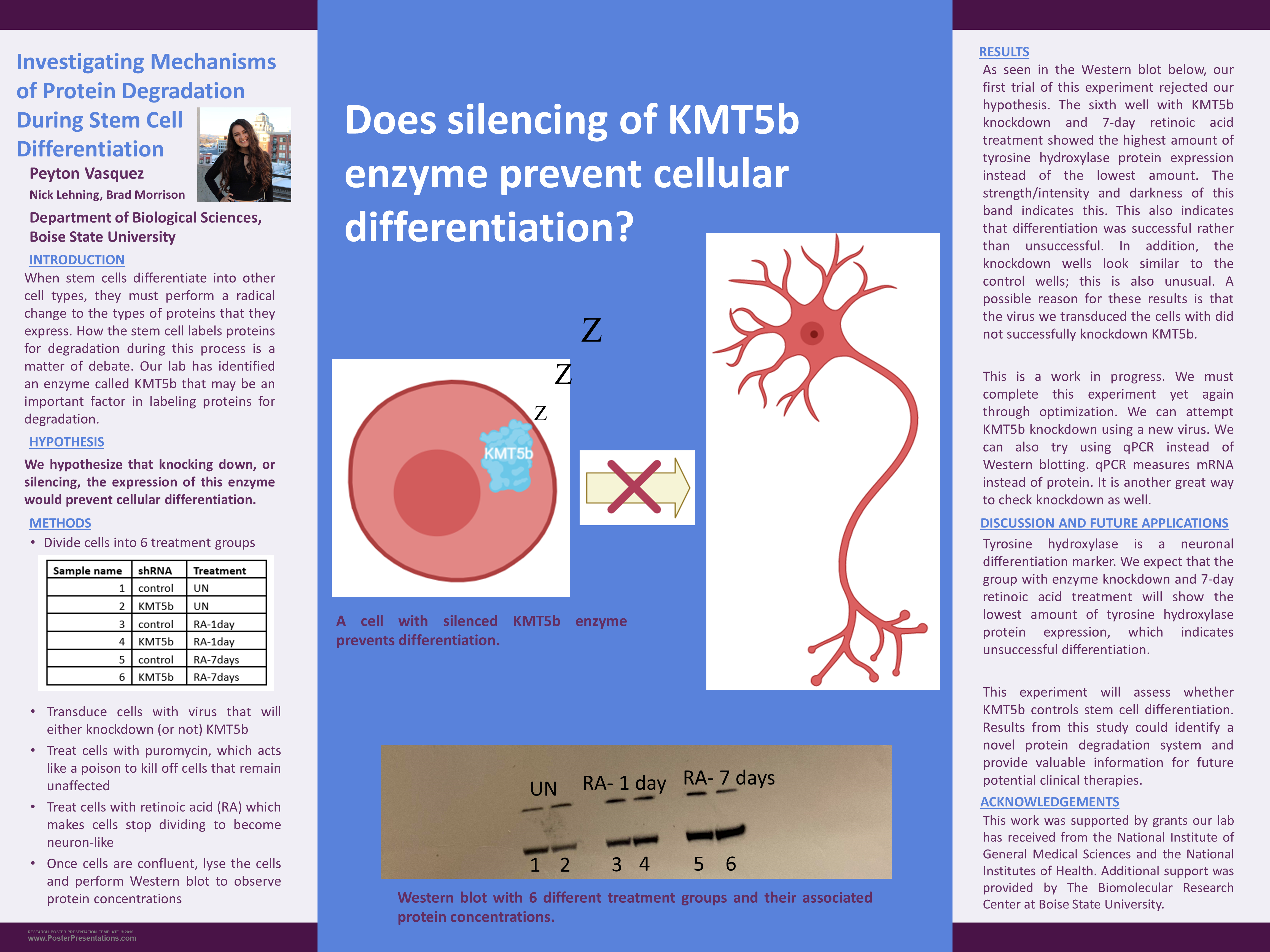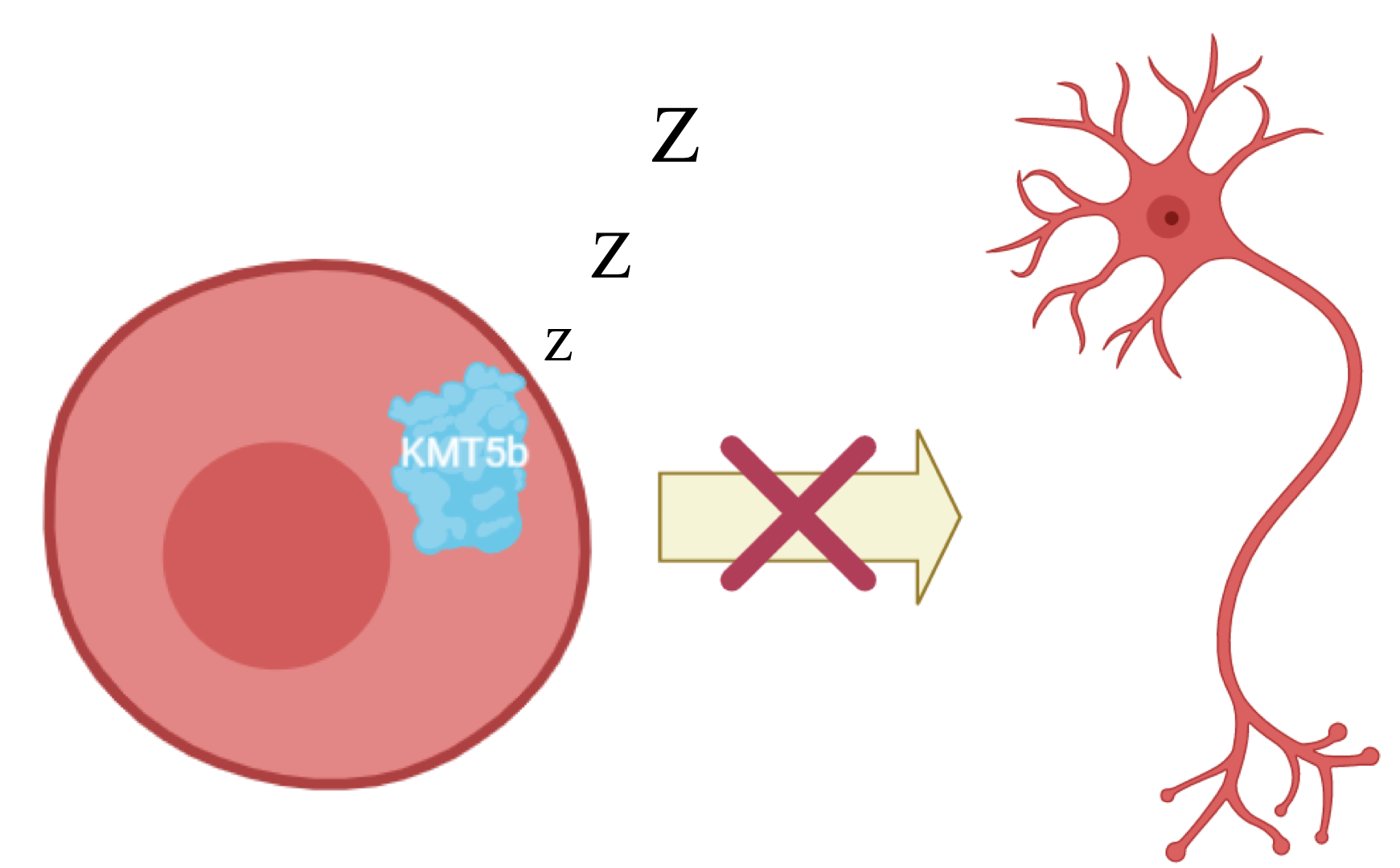Peyton B. Vasquez, Nick Lehning, Dr. Brad Morrison

Does silencing of KMT5b enzyme prevent cellular differentiation?


Introduction
When stem cells differentiate into other cell types, they must perform a radical change to the types of proteins that they express. How the stem cell labels proteins for degradation during this process is a matter of debate. Our lab has identified an enzyme called KMT5b that may be an important factor in labeling proteins for degradation.
Hypothesis
We hypothesize that knocking down, or silencing, the expression of this enzyme would prevent cellular differentiation.
Methods
- Divide cells into 6 treatment groups
| Sample Name | shRNA | Treatment |
|---|---|---|
| 1 | control | UN |
| 2 | KMT5b | UN |
| 3 | control | RA-1day |
| 4 | KMT5b | RA-1day |
| 5 | control | RA-7days |
| 6 | KMT5b | RA-7days |
- Transduce cells with virus that will either knockdown (or not) KMT5b
- Treat cells with puromycin, which acts like a poison to kill off cells that remain unaffected
- Treat cells with retinoic acid (RA) which makes cells stop dividing to become neuron-like
- Once cells are confluent, lyse the cells and perform Western blot to observe protein concentrations
Results
As seen in the Western blot below, our first trial of this experiment rejected our hypothesis. The sixth well with KMT5b knockdown and 7-day retinoic acid treatment showed the highest amount of tyrosine hydroxylase protein expression instead of the lowest amount. The strength/intensity and darkness of this band indicates this. This also indicates that differentiation was successful rather than unsuccessful. In addition, the knockdown wells look similar to the control wells; this is also unusual. A possible reason for these results is that the virus we transduced the cells with did not successfully knockdown KMT5b.
This is a work in progress. We must complete this experiment yet again through optimization. We can attempt KMT5b knockdown using a new virus. We can also try using qPCR instead of Western blotting. qPCR measures mRNA instead of protein. It is another great way to check knockdown as well.
Discussion and Future Application
Tyrosine hydroxylase is a neuronal differentiation marker. We expect that the group with enzyme knockdown and 7-day retinoic acid treatment will show the lowest amount of tyrosine hydroxylase protein expression, which indicates unsuccessful differentiation.
This experiment will assess whether KMT5b controls stem cell differentiation. Results from this study could identify a novel protein degradation system and provide valuable information for future potential clinical therapies.
Acknowledgements
This work was supported by grants our lab has received from the National Institute of General Medical Sciences and the National Institutes of Health. Additional support was provided by The Biomolecular Research Center at Boise State University.
Additional Information
For questions or comments about this research, contact Peyton Vasquez at peytonvasquez@u.boisestate.edu.